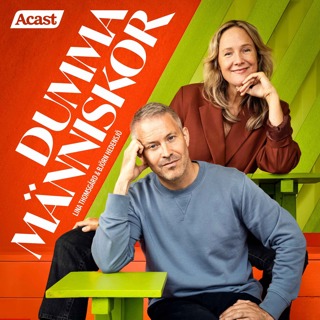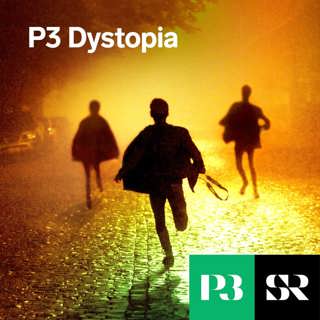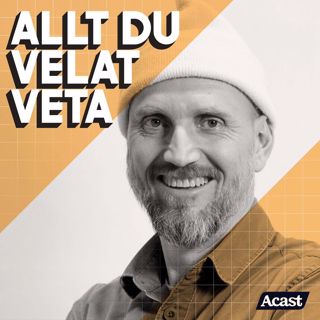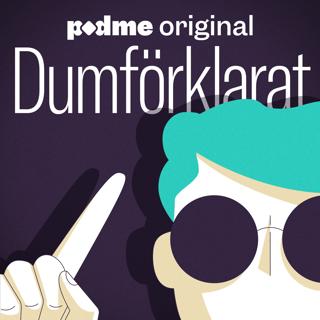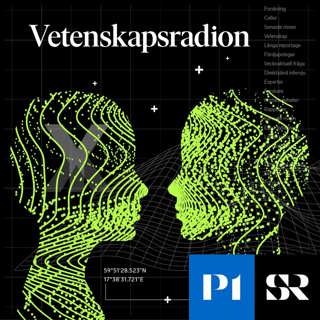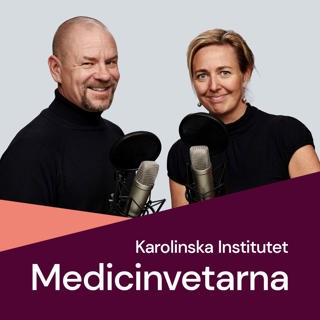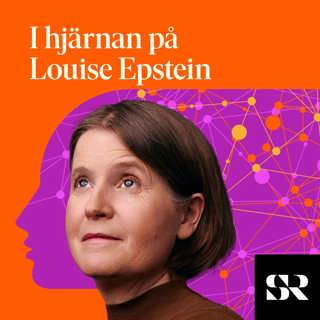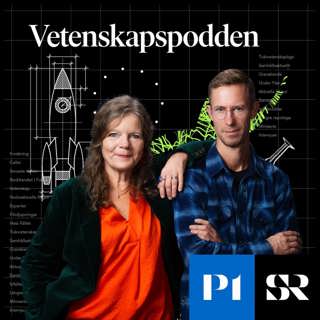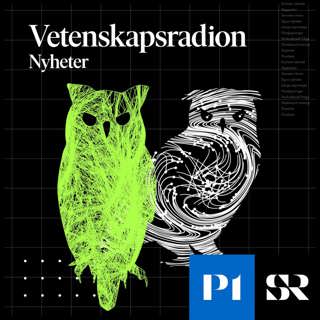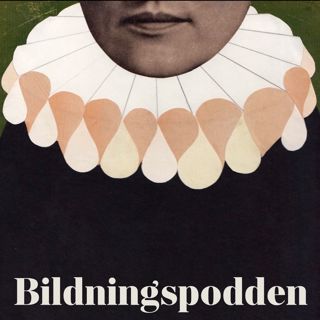
The Science of Love, Desire and Attachment
In this episode, I discuss the psychology and biology of desire, love and attachment. I explain how childhood attachment types are thought to inform adult attachment styles to romantic partners, and I describe some of the major theories of human mate selection, relationships and infidelity. Additionally, I explore the neurobiology and proposed subconscious processing underlying desire, love and attachment, including the roles of empathy and “positive delusion." I outline how self-awareness can shift one’s relationship attachment style towards securely bonded partnerships. Finally, I describe specific tools and supplements that have been researched to increase libido and sex drive. Throughout the episode, I explain the science and key mechanisms underlying romantic love and outline tools for those seeking to find a strong, healthy relationship, or for those wanting to strengthen an existing relationship. For the full show notes, visit hubermanlab.com. Thank you to our sponsors AG1: https://athleticgreens.com/huberman LMNT: https://drinklmnt.com/hubermanlab Waking Up: https://wakingup.com/huberman Momentous: https://livemomentous.com/huberman Timestamps (00:00:00) Desire, Love & Attachment (00:02:59) Odor, Perceived Attractiveness & Birth Control (00:08:21) Sponsors: AG1, LMNT (00:14:13) Romance: Balancing Love & Desire (00:19:00) Animal Studies, Vasopressin & Monogamy (00:22:06) Strange Situation Task, Childhood Attachment Styles (00:32:52) Adult Attachment Styles (00:38:50) Secure Attachment (00:41:23) Autonomic Arousal: The “See-Saw” (00:50:39) Tool: Self-Awareness, Healthy Interdependence (00:53:11) Neurobiology of Desire, Love & Attachment (00:58:02) Empathy & Mating & the Autonomic Nervous System (01:10:02) Positive Delusion, Touch (01:15:20) Relationship Stability (01:21:22) Selecting Mates, Recognition of Autonomic Tone (01:38:28) Neural Mechanisms of Romantic Attachment (01:47:43) Autonomic Coordination in Relationships (01:56:13) Infidelity & Cheating (02:08:56) “Chemistry”, Subconscious Processes (02:12:44) Tools: Libido & Sex Drive (02:20:20) Maca (Maca root) (02:25:58) Tongkat Ali (Longjack) (02:28:56) Tribulus terrestris (02:33:14) Zero-Cost Support, YouTube, Spotify/Apple Reviews, Sponsors, Instagram, Twitter, Supplements Disclaimer Learn more about your ad choices. Visit megaphone.fm/adchoices
14 Feb 20222h 30min

Using Play to Rewire & Improve Your Brain
In this episode, I discuss the transformative nature of play—how it changes our feelings, thoughts and actions and indeed, how it can rewire our brain to function better in all contexts. I explain the role of play in childhood, as well as adulthood in skill and social development and describe key characteristics of the mind and body during play. Additionally, I explore how play allows the brain to test contingencies in different roles/environments. Throughout, I discuss the underlying neurobiology of play. I also describe how low-stakes play, and tinkering can broaden and shape your future capabilities. Finally, I discuss how our childhood ‘personal play identity’ informs our adult personality. Throughout the episode, I use the science of play to outline recommendations for using play as a means to enhance neuroplasticity and explore novel situations, regardless of age. For the full show notes, visit hubermanlab.com. Thank you to our sponsors AG1: https://athleticgreens.com/huberman LMNT: https://drinklmnt.com/hubermanlab Waking Up: https://wakingup.com/huberman Momentous: https://livemomentous.com/huberman Timestamps (00:00:00) The Power of Play (00:02:23) Tool: Reading on Smart Phones, Sighing & Learning (00:09:33) Sponsors: AG1, LMNT (00:13:57) Homeostatic Regulation of Play (00:23:53) Childhood Play & Mindsets (00:29:21) Contingency Testing (00:32:17) The (Power of) Playful Mindset (00:36:13) Body Postures (00:44:03) Rule Testing & Breaking (00:48:24) Role Play (00:50:39) Neurobiology of Low-stakes Play (00:54:22) Expanding Capabilities through Tinkering (01:00:03) Play Is THE Portal to Neuroplasticity (01:04:44) Adulthood Play (01:10:14) Fire Together, Wire Together (01:18:03) Trauma & Play Deficits & Recovery (01:23:25) Competition & Dynamic Movement (01:27:36) Chess, Mental Roles, Novelty (01:32:52) Personal Play Identity (01:37:24) Play Transforms Your Future Self (01:40:55) Recommendations for Play (01:44:25) Zero-Cost Support, Spotify/Apple Reviews, YouTube, Sponsors, Instagram, Twitter, Supplements Disclaimer Learn more about your ad choices. Visit megaphone.fm/adchoices
7 Feb 20221h 43min

Optimizing Workspace for Productivity, Focus, & Creativity
In this episode, I discuss ways to set up your workspace to optimize productivity, focus and creativity. I discuss how to adjust light, physically arrange your work environment, and leverage body posture to enhance productivity. Additionally, I explore how to shift your work environment for particular types of tasks. Moreover, I review the role of body movement in the workspace. I also discuss sound-based tools that can either enhance or diminish cognitive functioning (the ability to focus on deep work). I describe a particular frequency of binaural beats that studies show can be used to enhance memory and recall. This episode covers quality peer-reviewed findings practical tools anyone can use, regardless of budget, in order to optimize their workspace to achieve heightened levels of productivity, increased alertness and focus, and creativity. For the full show notes, visit hubermanlab.com. Thank you to our sponsors AG1: https://athleticgreens.com/huberman LMNT: https://drinklmnt.com/hubermanlab Waking Up: https://wakingup.com/huberman Momentous: https://livemomentous.com/huberman Timestamps (00:00:00) Arranging Environment for Focus (00:02:44) Sponsors: AG1, LMNT (00:07:55) How to Increase Focus (00:10:02) Lighting Your Work in Phase 1 (00:16:00) Lighting Your Work in Phase 2 (00:19:45) Lighting Your Work in Phase 3 (00:24:17) Where to Look While You Work (00:28:02) Arranging Your Environment (00:31:24) Body Posture (00:34:22) How Long to Do Deep Work (00:36:50) Set the Right Visual Window Size (00:42:15) 45 min / 5 min Rule (00:44:23) The Cathedral Effect: Analytic vs Creative Work (00:55:50) Leveraging Background Noise (01:02:20) Binaural Beats for Work (01:06:38) The Best Binaural Frequency for Work (01:11:17) How Binaural Beats Increase Focus (01:13:56) Minimizing Interruptions (01:20:01) Sit or Stand, or Both? (01:25:18) Movement in the Workspace (01:31:00) Summary & Shifting Work Environments (01:39:36) Zero-Cost Support, Sponsors, Instagram, Twitter, Supplements Disclaimer Learn more about your ad choices. Visit megaphone.fm/adchoices
31 Jan 20221h 37min

Science of Mindsets for Health & Performance | Dr. Alia Crum
My guest is Dr. Alia Crum, Associate (tenured) Professor of Psychology at Stanford University and Director of the Stanford Mind & Body Lab. Dr. Crum is a world expert on mindsets and beliefs and how they shape our responses to stress, exercise, and even to the foods we eat. We discuss how our mindset about the nutritional content of food changes whether it is satisfying to us at a physiological (hormonal and metabolic) level. She also tells how mindsets about exercise can dramatically alter the effects of exercise on weight loss, blood pressure, and other health metrics. Dr. Crum teaches us how to think about stress in ways that allow stress to grow us and bring out our best rather than diminish our health and performance. Throughout the episode, Dr. Crum provides descriptions of high-quality peer-reviewed scientific findings that we can all leverage toward better health and performance in our lives. For the full show notes, visit hubermanlab.com. Thank you to our sponsors AG1: https://athleticgreens.com/huberman LMNT: https://drinklmnt.com/hubermanlab Waking Up: https://wakingup.com/huberman Momentous: https://livemomentous.com/huberman Timestamps (00:00:00) Introducing Dr. Alia Crum from Stanford University (00:03:31) Sponsors: AG1, LMNT (00:08:26) What Is a Mindset & What Does It Do? (00:14:45) Mindsets Change Our Biological Responses to Food (00:22:28) Beliefs About Our Food Matter (00:25:57) Placebo vs Beliefs vs Nocebo Effects (00:28:57) Mindset (Dramatically) Impacts the Effects of Exercise (00:33:44) Motivational Messaging & Mindset About Fitness (00:39:30) The Power of a ‘Potency & Indulgence’ Mindset (00:42:03) Mindsets About Sleep, Tracking Sleep (00:45:00) Making Stress Work For (or Against) You (01:01:50) Mindsets Link Our Conscious & Subconscious (01:04:50) 3 Best Ways to Leverage Stress (01:10:40) 4 Things That Shape Mindsets, Influencers & Mindsets (01:19:40) Mindsets About Medicines & Side Effects (01:26:25) How to Teach Mindsets (01:31:47) Dr. Crum’s Research, Clinical & Athletic Backgrounds (01:36:20) The Stanford Mind & Body Lab, Resources for Stress (01:38:30) Synthesis, Participating in Research (01:39:04) Subscribe, Sponsors, Instagram, Twitter, Supplements Disclaimer Learn more about your ad choices. Visit megaphone.fm/adchoices
24 Jan 20221h 37min

The Science of Setting & Achieving Goals
In this episode, I discuss the science of setting, assessing, and pursuing goals. I explain the neural (brain) circuits that underlie goal setting and pursuit. Then I describe nine science-supported tools anyone can apply toward their goals. I explain when and how to use goal visualization, when to use multitasking and how to use specific rewards to improve the likelihood of reaching your goals. I also explain why envisioning failures and their consequences are effective and how to set goals of the appropriate level of challenge. I also explain how the molecule dopamine is used to gauge our progress toward milestones and long-term overarching goals and how to leverage dopamine for goal pursuit. Finally, I explain a unique tool called 'space-time bridging' that can be used to support all aspects of goal setting, assessment, and pursuit. This episode ought to be useful for anyone seeking to improve their performance in work, school, exercise, athletics, or personal development. For the full show notes, visit hubermanlab.com. Thank you to our sponsors AG1: https://athleticgreens.com/huberman LMNT: https://drinklmnt.com/hubermanlab Waking Up: https://wakingup.com/huberman Momentous: https://livemomentous.com/huberman Timestamps (00:00:00) The Neuroscience of Goals (00:01:56) Tool 1: Learn Fast(er) by the 85% Rule (00:06:18) Sponsors: LMNT & Waking Up (00:13:55) Brain Circuits for Setting & Pursuing Goals (00:21:52) Determining the Value of Goals (00:24:33) Psychology of Goal Setting: Assessing Value, Action Steps (00:30:29) Peripersonal Space vs. Extrapersonal Space (00:35:39) Visually Focusing on a Goal Line Improves Performance (00:43:50) How Vision Improves Performance: Blood Pressure (00:51:55) Tool 2: Use Focal Vision to Initiate Goal Pursuit (00:54:40) Tool 3: Use Aged Self-Images to Self-Motivate (00:59:33) Tool 4: Visualization of Goals is Only Helpful at the Start (01:02:05) Tool 5: Visualizing Failure is the Best Ongoing Motivator (01:07:26) Tool 6: Make Goals Moderately Lofty (01:13:05) Tool 7: Avoid Goal Distraction; Focus on 1-2 Major Goals Per Year (01:15:57) Tool 8: Ensure Specificity of Goals, Weekly Assessment (01:19:57) Dopamine, Motivation & Pleasure in Seeking Goals (01:22:43) Dopamine Reward Prediction Error, Controlling Dopamine (01:34:26) How Dopamine Influences Vision & Vice Versa (01:38:10) Interim Summary of Goal-Pursuit Steps (01:39:50) Tool 9: Space-Time Bridging (01:49:59) Summary (01:51:50) Subscribe, Sponsors, Supplements, Instagram, Twitter, Newsletter Disclaimer Learn more about your ad choices. Visit megaphone.fm/adchoices
17 Jan 20221h 48min

Breathing for Mental & Physical Health & Performance | Dr. Jack Feldman
This episode my guest is Dr. Jack Feldman, Distinguished Professor of Neurobiology at the University of California, Los Angeles and a pioneering world expert in the science of respiration (breathing). We discuss how and why humans breathe the way we do, the function of the diaphragm and how it serves to increase oxygenation of the brain and body. We discuss how breathing influences mental state, fear, memory, reaction time, and more. And we discuss specific breathing protocols such as box-breathing, cyclic hyperventilation (similar to Wim Hof breathing), nasal versus mouth breathing, unilateral breathing, and how these each affect the brain and body. We discuss physiological sighs, peptides expressed by specific neurons controlling breathing, and magnesium compounds that can improve cognitive ability and how they work. This conversation serves as a sort of "Master Class" on the science of breathing and breathing-related tools for health and performance. For the full show notes, visit hubermanlab.com. Thank you to our sponsors AG1: https://athleticgreens.com/huberman LMNT: https://drinklmnt.com/hubermanlab Waking Up: https://wakingup.com/huberman Momentous: https://livemomentous.com/huberman Timestamps (00:00:00) Introducing Dr. Jack Feldman (00:03:20) Sponsors: LMNT & Waking Up (00:10:35) Why We Breathe (00:14:35) Neural Control of Breathing: “Pre-Botzinger Complex” (00:16:20) Nose vs Mouth Breathing (00:18:18) Skeletal vs. Smooth Muscles: Diaphragm, Intracostals & Airway Muscles (00:20:11) Two Breathing Oscillators: Pre-Botzinger Complex & Parafacial Nucleus (00:26:20) How We Breathe Is Special (Compared to Non-Mammals) (00:33:40) Stomach & Chest Movements During Breathing (00:36:23) Physiological Sighs, Alveoli Re-Filling, Bombesin (00:49:39) If We Don’t Sigh, Our Lung (& General) Health Suffers (01:00:42) Breathing, Brain States & Emotions (01:05:34) Meditating Mice, Eliminating Fear (01:11:00) Brain States, Amygdala, Locked-In Syndrome, Laughing (01:16:25) Facial Expressions (01:19:00) Locus Coeruleus & Alertness (01:29:40) Breath Holds, Apnea, Episodic Hypoxia, Hypercapnia (01:35:22) Stroke, Muscle Strength, TBI (01:38:08) Cyclic Hyperventilation (01:39:50) Hyperbaric Chambers (01:40:41) Nasal Breathing, Memory, Right vs. Left Nostril (01:44:50) Breathing Coordinates Everything: Reaction Time, Fear, etc. (01:57:13) Dr. Feldman’s Breathwork Protocols, Post-Lunch (02:02:05) Deliberately Variable Breathwork: The Feldman Protocol (02:06:29) Magnesium Threonate & Cognition & Memory (02:18:27) Gratitude for Dr. Feldman’s Highly Impactful Work (02:20:53) Zero-Cost Support, Sponsors, Instagram, Twitter, Supplements Title Card Photo Credit: Mike Blabac Disclaimer Learn more about your ad choices. Visit megaphone.fm/adchoices
10 Jan 20222h 18min

The Science of Making & Breaking Habits
In this episode, I review the science of habit formation and habit elimination and how the process of neuroplasticity (brain rewiring) underlies these processes. I describe two new systems for habit formation. The first system is grounded in the neuroscience of brain states and our ability to perform (and to avoid) certain tasks at different phases of the 24-hour day. The second system focuses on 21-day habit formation and consolidation. I also discuss "task bracketing" as an approach to enhancing habit formation and eliminating unwanted habits and the neural circuits that underlie task bracketing in the basal ganglia (a brain region for generating and stopping behaviors). I also review the science of dopamine rewards and how to apply that knowledge to shaping habits. The science and tools in this episode ought to be helpful for anyone looking to build better habits and eliminate unwanted habits for school, work, fitness, relationships, creative endeavors, and more—indeed for any person or situation where behavioral changes are needed. For the full show notes, visit hubermanlab.com. Thank you to our sponsors AG1: https://athleticgreens.com/huberman LMNT: https://drinklmnt.com/hubermanlab Waking Up: https://wakingup.com/huberman Momentous: https://livemomentous.com/huberman Timestamps (00:00:00) Introducing Habits; New Programs (00:02:46) Sponsors: LMNT & Waking Up (00:06:52) Habits versus Reflexes, Learning, Neuroplasticity (00:08:51) Goal-Based Habits vs. Identity-Based Habits (00:11:40) How Long It (Really) Takes to Form a Habit; Limbic-Friction (00:16:07) Linchpin Habits (00:18:55) Mapping Your Habits; Habit Strength, Context-Dependence (00:22:55) Automaticity (00:24:03) Tool 1: Applying Procedural Memory Visualizations (00:27:48) Hebbian Learning, NMDA receptors (00:31:00) Tool 2: Task Bracketing; Dorsolateral Striatum (00:37:08) States of Mind, Not Scheduling Time Predicts Habit Strength (00:38:16) Tool 3: Phase-Based Habit Plan: Phase 1 (00:46:29) Tool 3: Phase-Based Habit Plan: Phase 2 (00:55:24) Tool 3: Phase-Based Habit Plan: Phase 3 (01:01:34) Habit Flexibility (01:04:57) Should We Reward Ourselves? How? When? When NOT to. (01:10:30) Tool 4: “Dopamine Spotlighting” & Task Bracketing (01:18:22) Tool 5: The 21-Day Habit Installation & Testing System (01:28:26) Breaking Habits: Long-Term (Synaptic) Depression (01:35:49) Notifications Don’t Work (01:37:50) Tool 6: Break Bad Habits with Post-Bad-Habit “Positive Cargo” (01:44:26) Addictions as Habits: https://hubermanlab.com/dr-anna-lembke-understanding-and-treating-addiction (01:45:28) Conclusion & Synthesis (01:48:27) Zero-Cost Support, Sponsors, Supplements, Instagram, Twitter Title Card Photo Credit: Mike Blabac Disclaimer Learn more about your ad choices. Visit megaphone.fm/adchoices
3 Jan 20221h 47min

The Biology of Slowing & Reversing Aging | Dr. David Sinclair
In this episode, I am joined by Dr. David Sinclair, tenured Professor of Genetics at Harvard Medical School and an expert researcher in the field of longevity. Dr. Sinclair is also the author of the book Lifespan: Why We Age & Why We Don't Have To, and the host of the Lifespan Podcast, which launches January 5, 2022. In this interview, we discuss the cellular and molecular mechanisms of aging and what we all can do to slow or reverse the aging process. We discuss fasting and supplementation with resveratrol, NAD, metformin, and NMN. We also discuss the use of caffeine, exercise, cold exposure, and why excessive iron load is bad for us. We discuss food choices for offsetting aging and promoting autophagy (clearance of dead cells). And we discuss the key blood markers everyone should monitor to determine your biological versus chronological age. We also discuss the future of longevity research and technology. This episode includes lots of basic science and specific, actionable protocols, right down to the details of what to do and when. By the end, you will have in-depth knowledge of the biology of aging and how to offset it. Read the full show notes for this episode at hubermanlab.com. Thank you to our sponsors AG1: https://athleticgreens.com/huberman LMNT: https://drinklmnt.com/hubermanlab Waking Up: https://wakingup.com/huberman Momentous: https://livemomentous.com/huberman Timestamps 00:00:00 Dr. David Sinclair, Harvard Medical School 00:03:45 Sponsors: AG1, LMNT & Waking Up 00:07:45 “Aging as a Disease” vs. Longevity & Anti-Aging 00:10:23 What Causes Aging? The Epigenome 00:15:53 Cosmetic Aging 00:17:15 Development Never Stops, Horvath Clock 00:20:12 Puberty Rate as a Determinant of Aging Rate 00:23:00 Fasting, Hunger & Food Choices 00:32:44 Fasting Schedules, Long Fasts, (Macro)Autophagy 00:34:50 Caffeine, Electrolytes 00:35:56 Blood Glucose & the Sirtuins; mTOR 00:37:55 Amino Acids: Leucine, “Pulsing” 00:44:35 Metformin, Berberine 00:50:29 Resveratrol, Wine 00:53:20 What Breaks a Fast? 00:56:45 Resveratrol, NAD, NMN, NR; Dosage, Timing 01:09:10 Are Artificial Sweeteners Bad for Us? 01:12:04 Iron Load & Aging 01:15:05 Blood Work Analysis 01:19:37 C-Reactive Protein, Cholesterol: Serum & Dietary 01:26:02 Amino Acids, Plants, Antioxidants 01:33:45 Behaviors That Extend Lifespan, Testosterone, Estrogen 01:40:35 Neuroplasticity & Neural Repair 01:46:19 Ice Baths, Cold Showers, “Metabolic Winter” 01:48:07 Obesity & How It Accelerates Aging, GnRH 01:52:10 Methylation, Methylene Blue, Cigarettes 01:56:17 X-Rays 01:59:00 Public Science Education, Personal Health 02:05:40 The Sinclair Test You Can Take: www.doctorsinclair.com 02:08:13 Zero-Cost Support & Resources, Sponsors, Supplements, Instagram Disclaimer & Disclosures Learn more about your ad choices. Visit megaphone.fm/adchoices
27 Dec 20212h 7min


